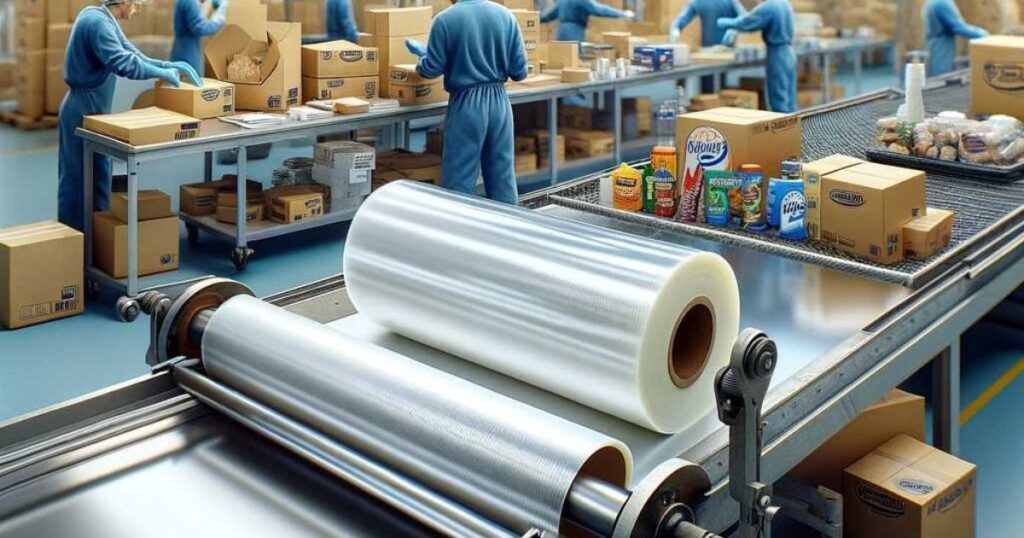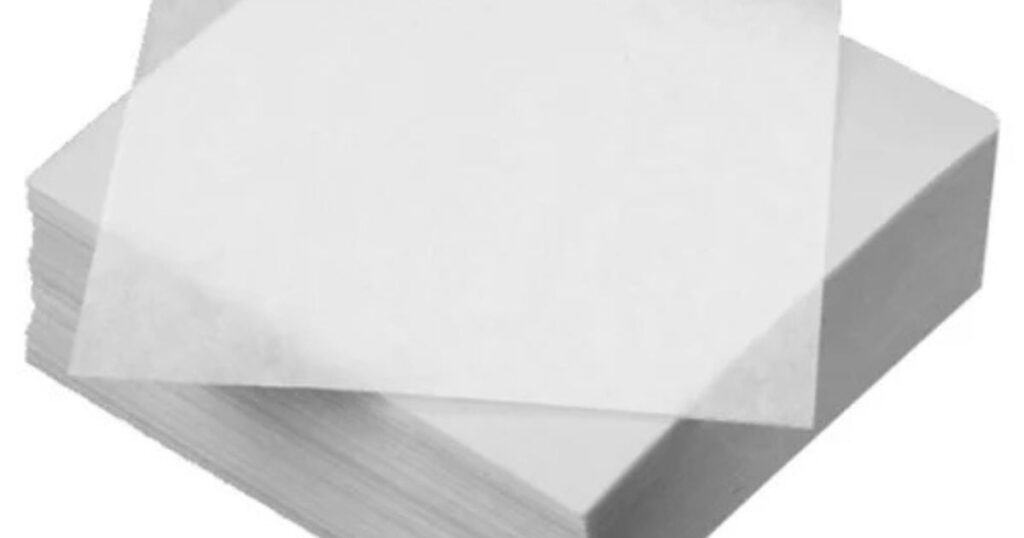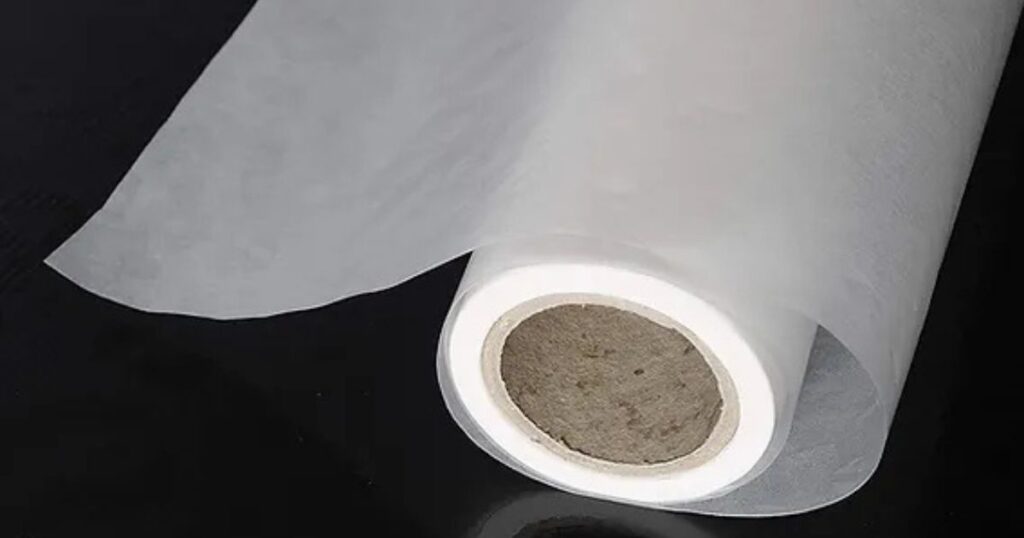In the modern world, where environmental sustainability, packaging innovation, and product protection are becoming increasingly critical, glassine paper is a solution that ticks many boxes. This thin, smooth, and translucent paper has a fascinating history and a variety of applications. Its features, benefits, and eco-friendly nature make it highly valuable in industries ranging from food packaging to archival storage and even the arts and crafts sector.
This article willarticle’ll explore glassine paper’s manufacturing process, examine its unique properties, and highlight its wide-ranging benefits and uses. Whether you’re an industry professional, an eco-conscious consumer, or just curious, this comprehensive guide will help you understand why Glassine is becoming an increasingly popular choice in packaging and glassine envelopes beyond.
What Is Glassine?
Glassine is a smooth, glossy, and translucent paper produced by refining pulp fibers through supercalendering. Its name comes fr “m its gl,” which means appearance resulting from its unique production process. Glassine paper is made from wood pulp and passed through a series of rollers under extreme pressure. This process increases the density of the paper and gives it its distinctive smoothness, translucence, and resistance to grease and moisture. The lack of pores or texture makes it an excellent barrier against air, moisture, and grease, which is why it is used in many industries.
Glass is not coated with chemicals or wax, unlike wax or parchment paper. Its glassy finish comes solely from the mechanical refining of the pulp fibers. Depending on the intended use, Glassine can be manufactured in various thicknesses, ranging from thin and delicate to more robust and Edible Paper: A Revolutionary Fusion Of Food And Sustainability durable.
A Brief Overview of Glassine Paper
Glassine paper, a smooth, semi-transparent material, is a versatile wonder. Crafted from highly refined wood pulp, it boasts a glossy, air- and water-resistant surface, making it the go-to for packaging delicate items. Its grease-resistant nature makes it a hit in the food industry. For instance, it’s commonly used for storing baked goods like cookies and pastries, wrapping chocolates, and packaging snacks like popcorn and nuts. But its talents don’t stop there. Glassine paper is also a star in the arts and crafts world, especially for interleaving artwork, stamps, and photographs to prevent smudging or sticking. Its versatility knows no what is glassine paper bounds.
Let’s talk about the elephant in the room-the environment. With its eco-friendly and biodegradable nature, Glassine is a darling of the eco-conscious packaging and retail industries. Its lightweight and flexible character make it a breeze to fold or wrap, while its transparency allows for visibility without needing to open the package. it paper is a useful, multipurpose substance that supports your environmental objectives while providing excellent protection. This is a win-win edible paper scenario.
Importance of Understanding Specialized Materials Like Glassine
Understanding specialized materials like glassine is not just a bonus- it’s necessary, particularly in industries requiring delicate protection and packaging. Glassine, a smooth, semi-transparent paper, is often used to safeguard items sensitive to moisture, air, and grease. Its unique properties—acid-free, pH-neutral, and oil-resistant—make it indispensable for packaging food, archiving documents, or preserving artwork. Knowing when and how to use glassine is not just about knowledge; it’s about empowerment. It helps ensure the longevity and quality of valuable items, from photographs to where to buy glassine paper collectibles.
Moreover, its eco-friendly nature, being recyclable and biodegradable, aligns with sustainability goals, making it a responsible choice in today’s environmental market. Grasping the specifics of materials like it enables businesses to offer superior, tailored protection and promotes sustainable packaging solutions. It’s not just about understanding-it’s about making informed decisions and feeling confident in your choices.
How Is Glassine Made?

Producing it paper involves several steps, starting with raw wood pulp and ending with a supercalendered final product. Here’s a breakdown Here’s it’s what is glassine envelopes made:
- Pulping: its wood pulp is mechanically processed to break down the fibers, creating a fine pulp suspension.
- Sheet Formation: The pulp is formed into thin sheets on a paper machine. At this stage, the paper still has a relatively rough texture and lacks the smoothness associated with Glassine.
- Supercalendering is the critical step that gives Glassine its unique properties.A sequence of heated rollers passes through the paper. known as calendars, under high pressure. This compresses the fibers tightly, smooths the surface, and increases the paper’s density.
- Fipaper: The final step involves cutting the it paper to the desired size and specifications. It can be left unbleached (giving it a natural brown color) or bleached to achieve a pure white appearance.
Key Features of Glassine
Glassine is a smooth, glossy, and semi-transparent paper known for its unique protective qualities. It is highly resistant to grease, moisture, and air, making it an ideal choice for packaging delicate items such as food, collectibles, and artwork. This lightweight material is pH-neutral, ensuring it doesn’t react with the items it encases, which preserves their condition over time. Its durability and flexibility make it easy to fold and use for wrapping or storage without the risk of What is Glassine tearing.
Glassine is also eco-friendly, fully recyclable, and biodegradable, making it a sustainable alternative to plastic packaging. Its clear finish allows for easy visibility of the contents, while its non-stick surface ensures items don’t cling, making it perfect for interleaving between sensitive materials. Whether you’re protecting documents, artwork, or food, it offers unmatched protection with a sleek, modern what is glassine paper used for appearance.
Smooth and Glossy Finish
One of Glassine’s most distinctive characteristics is its smooth, glossy surface. This makes it aesthetically appealing for applications where the look and feel of packaging matter. Glassine paper is semi-transparent. This clarity makes it ideal for packaging products where visibility is important, such as in food packaging, document storage, and retail. Glassine’s tightly it users provide excellent grease, oil, and moisture resistance without needing coatings or additives. This makes it a perfect choice for wrapping food items like pastries, butter, and meats, where protection against grease is is glassine biodegradable essential.
Eco-Friendly
Glassine is biodegradable, compostable, and recyclable. Since it is made from wood and doesn’t contain synthetic materials, it is considered an environmentally friendly alternative to plastic-based packaging. This makes it a popular choice for businesses and consumers looking to reduce their environmental impact.
Strength and Durability
Despite its thin and lightweight appearance, the Glassine is surprisingly strong. Its density makes it resistant to tearing and wrinkling, even under rough is glassine waterproof handling.
pH Neutral and Archival-Quality
Glassine is often used for archival and doesn’t deteriorate a positive nature. It won’t get with, makingn’tct with the materials in contact, making it ideal for preserving photographs, documents, and artwork. Glassine is non-abrasive, which makes it a popular choice for wrapping delicate items like artwork, stamps, and collectibles. Its smooth surface won’t scratch or damage fragile items.
Chemical-Free
Glass is safe to come into close contact with food and delicate objects like jewelry and medications because it is devoid of chemicals, wax, and coatings.
Benefits of Using Glassine

Glassine is a versatile, eco-friendly material with a wide range of applications. One of its primary benefits is its smooth, non-stick surface, which protects delicate items such as stamps, artwork, and photographs without transferring oils or dust. Glassine protects food products, pharmaceuticals, and cosmetics as a water-resistant and greaseproof What is it material.
Its biodegradable and recyclable nature makes it a sustainable choice for packaging, aligning with the increasing demand for environmentally conscious products. Glassine is also transparent, allowing for easy inspection of contents without opening the packaging, which is useful for preserving product integrity. Lightweight yet durable, it’s perfect for reducing bulk in shipping while maintaining the safety of fragile items. Glassine offers protection, sustainability, and convenience when archiving, packaging, or storing.
Sustainable and Environmentally Friendly
One of the most significant benefits of Glassine is its environmental friendliness. It will gradually decompose over time without leaving any hazardous traces in the environment because it is compostable and biodegradable. Glass can also be recycled, provided it is clean and uncontaminated, reducing its environmental impact. As consumers and companies become more eco-conscious, it is becoming a popular alternative to plastic packaging.
Ideal for Food Packaging
Thanks to its grease-resistant and moisture-resistant properties, it is widely used in the food industry. It’s ideal for wrapIt’s baked goods, deli meats, and snacks without chemical treatments or coatings. Since it is a natural, chemical-free product, it is safe for direct contact with food. Its translucent quality also enhances the presentation of food items, allowing consumers to see what they’re purchasing. They’re compromising the packaging’s protectpackaging’ses.
Archival and Preservation Purposes
Glassine’sGlassine’s pH-neutrGlassine’srasivepH-neutral and acid-free nature makes it perfect for preserving delicate documents, photographs, artwork, and other valuable items. Museums, libraries, and collectors frequently use Glassine to store and protect items because it won’t cause degradation or yellowing over time. Its transparency allows for easy identification of items without opening the packaging, making it especially useful for archival storage.
Protects and Preserves Collectibles
Stamp collectors, coin collectors, and other enthusiasts value Glassine for protecting delicate items from dust, dirt, and environmental factors. Since it is non-abrasive and pH-neutral, it won’t damage or damage the items it’s protecting. Glit’sne envelopes are commonly used to store stamps, while it sheets are used for interleaving between coins or other What is Glassine collectibles.
Versatile in Arts and Crafts
In addition to its industrial and archival uses, Glassine has found a place in the arts and crafts world. Its translucent appearance and smooth texture make it ideal for creative projects, such as custom envelopes, decorative wrapping, and DIY lampshades. Artists appreciate it as a protective interleaf between paintings or sketches, preventing smudging and damage.
Greaseproof and Waterproof Properties
Glassine’s greaseproof qualities are a major advantage for industries that produce greasy or oily products. It’s commonly used to package butter, cheese, and other greasy items, ensuring the packaging remains intact and presentable. Its moisture resistance also makes it useful in packaging products that require protection from humidity.
Lightweight and Cost-Effective
Glassine is incredibly lightweight, which makes it a cost-effective solution for industries that need to ship products. Since it is thinner and lighter than many alternatives, it reduces shipping costs, which is particularly important for bulk packaging.
Customizable and Flexible
Glassine can be manufactured in various thicknesses, colors, and sizes, making it highly customizable for different applications. Whether used in food packaging, archival storage, or industrial applications, Glassine can be tailored to meet specific requirements.
Applications of Glassine in Various Industries

Given its wide array of features and benefits, Glassine has applications across many industries. Let’s explore some of the most common ways Glassine is used:
Food Industry
Glassine is extensively used in the food industry to wrap baked goods, deli items, and greasy foods like butter and cheese. Its grease-resistant and moisture-resistant properties ensure that food remains fresh while the packaging stays clean. It is also popular in the confectionery industry for wrapping candies and chocolates.
Pharmaceutical Industry
Glass is used for packaging pharmaceutical products because it is chemical-free and non-toxic. It provides an effective barrier against contaminants while protecting delicate pills, powders, and other medicinal products from moisture and air.
Archival and Museum Storage
Museums, libraries, and archives use Glassine to store delicate documents, photographs, and artwork. Its pH-neutral and acid-free properties ensure that historical documents and works of art are preserved in pristine condition.
Stamp and Collectible Storage
Stamp collectors have long favored it envelopes for storing their valuable collections. The translucent nature of the paper allows for easy viewing of the stamps, while the non-abrasive surface ensures they remain undamaged. Similarly, Glassine is used in the coin-collecting world to protect coins from tarnishing.
Arts and Crafts
Artists and crafters use Glassine in a variety of creative projects. Its clarity and smooth texture make it a favorite for custom wrapping, gift packaging, and DIY projects. Artists also use it sheets to protect their work from smudging or damage. In the industrial sector, it is used to package parts, tools, and other items that require protection from dust, moisture, or grease.
Conclusion:
Glassine is a smooth, translucent paper with a glossy finish commonly used for packaging and preservation. It is made from refined wood pulp that is supercalendered to enhance its moisture resistance, greaseproof qualities, and durability. Due to its neutral pH and non-reactive nature, Glassine is favored for archiving delicate items like stamps, artwork, photographs, and food packaging. It’s eco-friendly, biodegradable, and recyclable, making it an increasingly popular sustainable option. In summary, Glassine is a versatile material that combines protection with sustainability, effectively meeting commercial and environmental needs.
FAQ:
What is Glassine?
Glassine is a smooth, glossy, and translucent paper made from finely beaten wood pulp. It is resistant to air, water, and grease, making it an excellent material for packaging and protecting products.
How does Glassine Differ from wax Paper?
Unlike wax paper, which has a wax coating to make it water-resistant, Glassine is naturally water-resistant and greaseproof without additional coatings. This makes it more eco-friendly and ideal for recyclable packaging.
Can Glassine be used for Baking?
No, Glassine is not heat-resistant and should not be used for baking. It’s intended for packaging and storage rather than direct exposure to heat.
Is Glassine Environmentally Friendly?
Yes, Glassine is eco-friendly due to its recyclable, biodegradable, and compostable nature. It is made from renewable resources and offers a sustainable alternative to plastic packaging.
Does it have any Protective Properties?
Glassine is resistant to moisture, air, and grease, making it an excellent material for protecting items from environmental factors like dirt, dust, and humidity.
Can you Print on Glassine?
Yes, you can print on Glassine, although it requires special techniques due to its smooth surface. It’s often used for branded packaging, labels, and decorative purposes.

